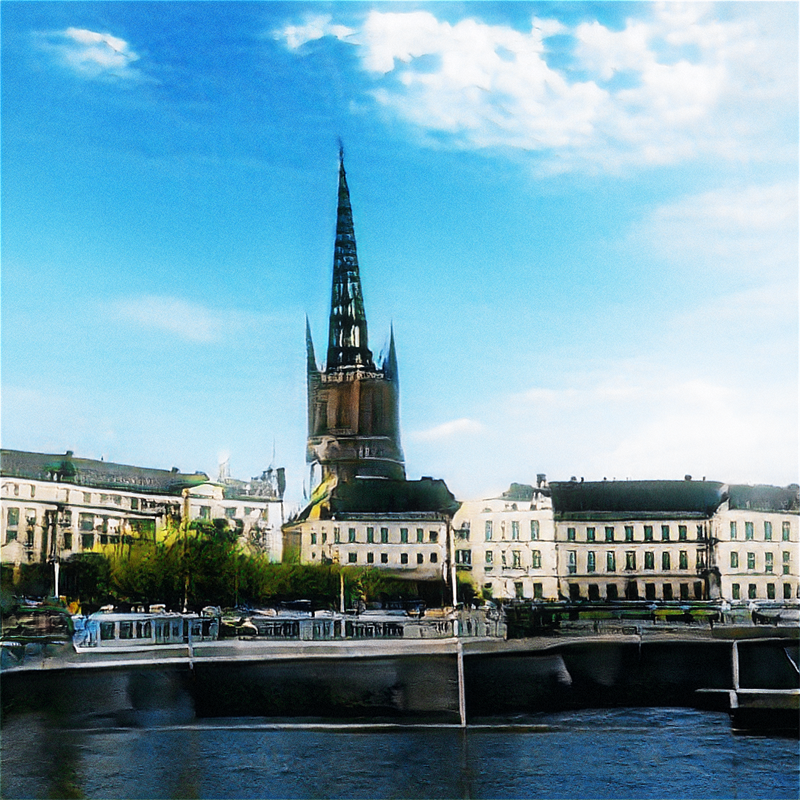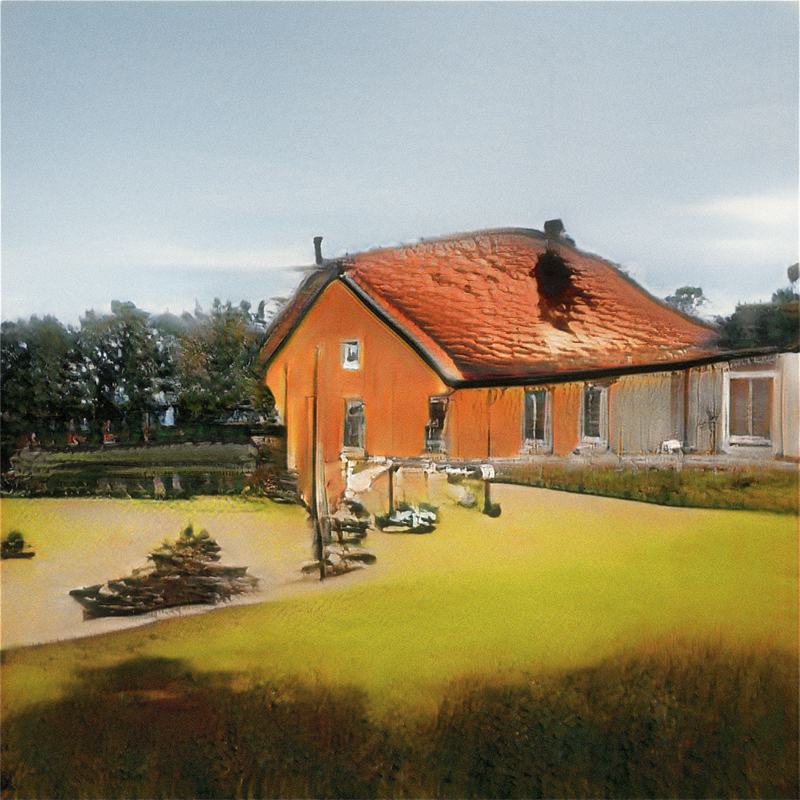Computers images of Stockholm now and then
Latent History
Refik Anadol
7 July–25 August Fotografiska Stockholm
Refik Anadol’s Latent History takes the viewer on a journey through a beautiful, yet thought-provoking work projected on a 55 metre-wide by 3.5 metre-high screen in Fotografiska’s large exhibition hall. It’s a never-before-seen portrayal of Stockholm, as envisioned by machines, using algorithms revealing the hidden history found in archives and old photographs stretching back 150 years. Latent History is a journey in time and space – and one that also challenges our imagination as to how different things could have been if only….
Imagine taking abstract data streams and turning them into a reality. By collecting a huge amount of digital information from different data sources, interpreting them artistically, and then giving them a life, one could present alternative histories that never actually happened. This is life for Refik Anadol. Born in 1985 in Istanbul, Turkey, this multiple award-winning artist, designer and director works with location-specific, digital visual artworks based on datasets, data stream collections and interpretation.

- “The digital revolution will continue to affect us in ways we find difficult to grasp. So much is happening in so many areas for the first time, and we’re continually breaking new ground. Such as here, producing art based on a machine’s vision, a kind of journey in time and space interpreting what has been, and creating alternative scenarios of what could have been,” says Anadol.

Now it’s the turn of the Swedish capital, portrayed in the work Latent History, created exclusively for Fotografiska on the theme of Stockholm as a city. In this work, Anadol uses his algorithms on datasets collected from the city archives to explore and re-imagine the hidden layers of Stockholm’s history. This will be a machine’s interpretation of information from the City of Stockholm’s archives, Stockholmskällan, and the Swedish National Heritage Board’s archive, K-samsök, also known as SOCH (Swedish Open Cultural Heritage).
All of this data is then filtered through Anadol’s artistry, in which he is completely open to any outcome, depending on what the machines and their computing power have managed to do with this constant flow of information. The end result is quite astonishing.

- “Since Anadol is now creating Latent History exclusively for Fotografiska, we can guarantee our visitors a monumental and different experience, which feels very special. It’s always important to raise awareness and this exhibition will encourage the viewer to ask important new questions about a city in constant flux,” says Johan Vikner, Exhibition Producer Fotografiska International.

The work will be based on photos from social media and archives, as well as datasets on populations, migration and immigration. The end result will be projected on the 55 metre wide by 3.5 metre high screen in Fotografiska’s large exhibition hall.
- “We explore, among other things, photographic memories from the past 150 years and offer the viewer a chance to experience something completely new. A re-imagining of the development of modern-day Stockholm, a latent source of information waiting to be revealed. Latent History reveals the old that would otherwise remain unprocessed and unseen in dark archives. Individuals and collectives, bodies and spaces, that have coalesced to create the city we experience today,” Anadol explains.

Anadol has previously exhibited installations in places such as the Walt Disney Concert Hall in Los Angeles, CLT Airport, the Ars Electronica Festival in Austria and the Istanbul Design Biennial in Turkey.
- "By utilizing machine intelligence to map the constant flow of change and transformation over time, we will also challenge the accepted image and history of the city. The work also speculates on alternative realities that could have been. What could these alternative scenarios have been? And can we learn anything from them?”
Footnote: The press pictures is not allowed to be cropped, just for press publishing during and till the end of the art fair period at Fotografiska. All photos in the PM ©Refik Anadol
Fotografiska Stockholm is not only the world’s most esteemed museum dedicated to the world of photography. The concept also contains an internationally awarded restaurant elected “the Museum Restaurant of the Year 2017”, as well as inspiring event spaces, an acclaimed academy and a shop featuring an extensive selection of photographic books. With a great network of world-class photographers at the core, Fotografiska Stockholm has since the opening hosted more than 170 exhibitions, including the work of iconic masters such as Annie Leibovitz, David LaChapelle, Irving Penn, Helmut Newton, Sarah Moon, Nick Brandt and Andres Serrano, as well as up-and-coming young photographers. By taking a stand in controversial issues and stretching their responsibility far beyond the realm of traditional art institutions, Fotografiska has a history of acting as an influencer, playing an active role in the Swedish society. The purpose is simple, to use the power of photography to unite, spread awareness and create positive impact. To inspire a more conscious world. Initially opened in Stockholm in 2010 the Fotografiska family is now growing and are expanding to Telliskivi Creative City in Tallinn and Park Avenue in New York. Taking on these prime locations Fotografiska aims to redefine the traditional museum experience by creating urban meeting places where global citizens are invited to dwell, get inspired, question the taken-for-granted and grow as individuals.








